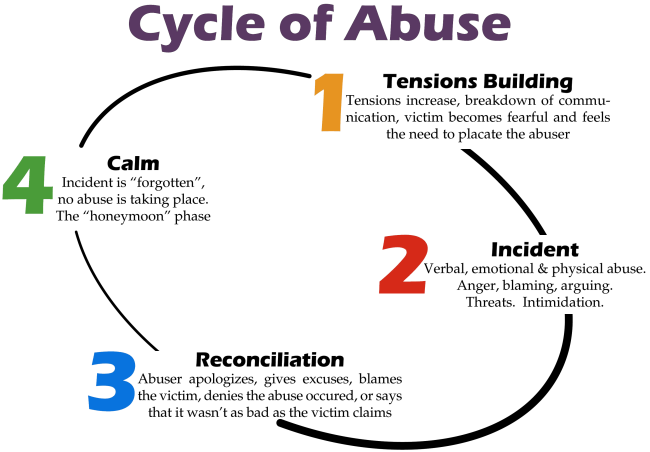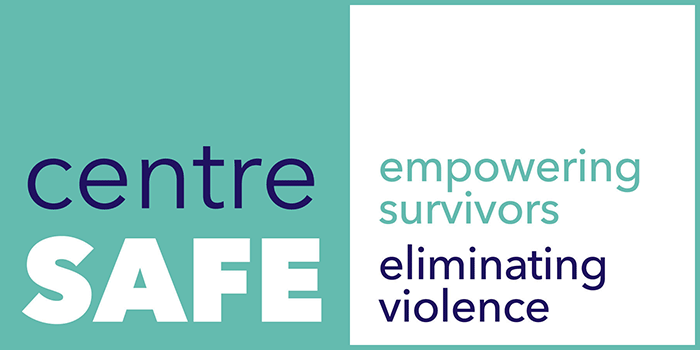What is Domestic Violence?
The term domestic violence refers to a range of abusive behaviors ranging from degrading remarks and cruel jokes, threatening looks, constant monitoring, economic exploitation, punches and kicks, sexual abuse, and homicide. All of these tactics are used by abusers to gain power and control over their victims. Unchecked, domestic violence almost always increases in frequency and severity.
Domestic violence comes in many forms including:
- Physical Abuse
- Verbal Abuse
- Emotional Abuse
- Sexual Abuse
- Financial Abuse
- Stalking
Many victims suffer all forms of abuse. Verbal and emotional abuse may be more subtle than physical harm, but this doesn’t mean it is less destructive to victims. Many have said that the emotional scars take much longer to heal than the broken bones.
The Power and Control Wheel (click graphic at left to see larger view) is a visual representation of the common tactics abusers use to gain control of their victims. This tool was originally developed by the Domestic Abuse Intervention Project in Duluth, MN.
To learn more visit our Forms of Abuse page.
Who Are The Victims And Perpetrators?
Research shows that the overwhelming majority (about 95%) of adult victims of domestic violence are women. Although the “norm” of domestic violence relationships is male perpetrator and female victims, anyone can be a victim of abuse.
Domestic violence occurs regardless of race, age, socioeconomic status, sexual orientation, mental or physical ability or religious background.
Abusers are not easily identifiable. While their behaviors may seem pathological, they are not likely to suffer from severe mental disorders. Domestic violence is NOT caused by mental illness, alcohol abuse, or stress. It is caused by one person’s desire to have power and control over a partner and it is a choice to behave in this way. Batterers frequently make excuses for their violence, claiming loss of control due to alcohol or drug use, or extreme stress. Although drug and alcohol abuse may intensify existing violent behavior, it does not cause domestic violence.
Abusers typically follow a pattern called the Cycle of Abuse (see image). The cycle can occur hundreds of times in an abusive relationship, the total cycle taking anywhere from a few hours, to a year or more to complete. However, the length of the cycle usually diminishes over time so that the “reconciliation” and “calm” stages may disappear.

Why Do They Stay?
Many people struggle with the fact that a victim may not leave their abuser. While it may seem like a simple decision to those outside the relationship, victims of abuse often face multiple barriers to leaving, including:
- Financial dependence
- Desire to keep family together
- Hope that the abuse will stop
- Pressure from family
- Denial
- Shame
- Lack of resources
- Fear
Many people believe that victims of domestic violence will be safe once they separate from the abusers. They also believe that victims are free to leave abusers at any time. However, leaving does not usually put an end to the violence. Abusers often escalate their violence to coerce a victim into reconciliation or to retaliate for the victim’s rejection or abandonment of the abuser.
Abusers who believe they are entitled to a relationship with victims or that they “own” their partners view a victims’s leaving as the ultimate betrayal and will likely retaliate. Because of this, leaving an abusive relationship can be a very dangerous time. Individuals are most likely to be murdered when attempting to report abuse or leave an abusive relationship.
This does not mean the victims should stay. Living with an abuser is highly dangerous because the violence usually escalates and becomes more frequent over time. However, if a victim is planning on leaving, safety planning is extremely important. Advocates from Centre Safe can discuss with victims how to leave as safely as possible and develop a safety plan for themselves and their children.
Additional Resources
